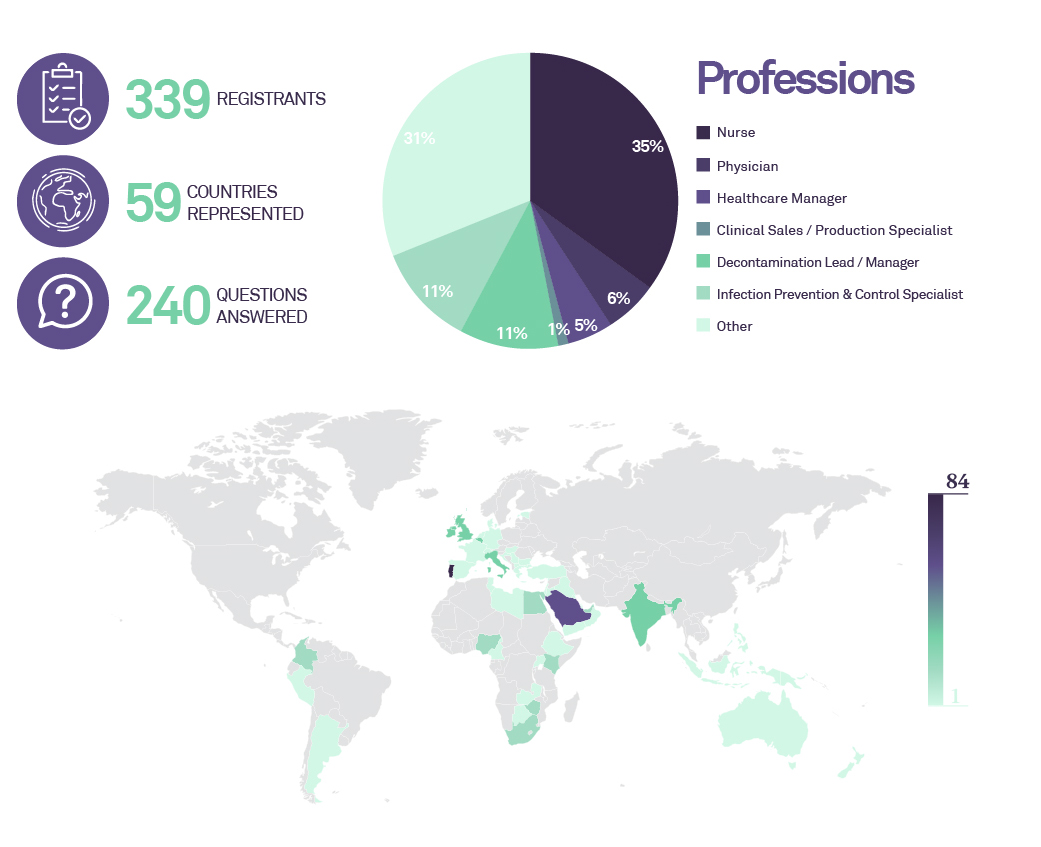During the second webinar, Mr. Manuel Valente will provide information about Improving the efficiency and effectiveness of medical device reprocessing as one component of the solution for better healthcare.

Operationalization of the concept “Lean management” in the OR (in the context of MD use and reprocessing), is based on the idea that the processes developed in this area of health care can be described as flows of sequential activities, where resources are placed to respond to the objective (MD reprocessing); in this sequence of activities, various forms of waste are classically recognized, classified as defects, excess production, stock, transport, unnecessary movements, rework, waiting and more recently talent or knowledge.
To combat the useless use of resources, the most common used tools are Value Stream Mapping, “Kaban”, “5S”, space ergonomics, “poka-yoke” devices, kaizen events or the systematic monitoring of process indicators.
Lean requires continuous thinking about progress, problem solving, and questioning the status quo (feeding continuous improvement).
Every day, patients in need of surgical interventions, have aimed that their surgery will take place according to a pre-established plan (which conditioned their personal and professional life and also that of their family). This plan must be sufficiently weighted to ensure that the surgical program is carried out with a very high probability, without constraints, always based on the installed capacity of the hospital organization. The support processes necessary for the surgery are “calibrated” to respond to planned needs, with the minimum necessary resources and with standardized practices for process safety. All activities that constitute the surgical procedures are designed and established to guarantee with high probability that the treatment will have the best possible results at first time (free of complications, including SSI- surgical site infections).
(feeding continue response to the patient’s expectations, surgical planning, maximization of installed capacity, doing it right the first time in all procedures.
The establishment of a standard of surgical activity is based on the investment in installed capacity, the costs of maintenance of capacity, the costs associated with the professionals needed for the activities to be carried out (e.g. time of OR activity, type of surgery to be performed and financing, etc.), the rate of efficiency and effectiveness of the process.
If we focus in particular on issues related to surgical instruments and the management of their use (quantity, type, reuse, etc.), efficiency approach models must take into account multifaceted strategies that respond to the surgical healthcare needs (OR outsourcing processes, MD volume reduction per surgery, single use / reprocessable MD weighting, installed capacity – surgical instruments, allocated time and surgeons, etc.);
The surgical activity bases its action on a group of professionals, who, in a concerted and synergistic way, develop their professional activity, with the aim of responding to surgical health care, in a timely manner, effectively and efficiently (always at first time and without defect and at the lowest cost).
The use and reprocessing of surgical MDs is a significant part of this activity, due to the increasing complexity of MDs, more challenging reprocessing protocols, associated with more demanding surgical procedures in increasingly severe patients.
This process begins with the choice and purchase of the MDs, planning the local operation of the reprocessing protocols, systematization of practices, restarting at each use, optimizing post-use decontamination conditions, still in the operating room (eg dedicated teams, in-depth and up-to-date knowledge of MDs, intraoperative and post-procedure care in functional maintenance of MDs, efficient and effective workflows, adequate surgical volume, etc.).
The results of an investment of this type, can only be expected on the surgical results (eg very low rates of surgical infection, high cost effectiveness, controlled waiting lists) and development and research.
Toolbox & others: Daily Kaizen (daily management, problem solving, Gemba, VoC, etc.), continuous improvement culture, “Crew Resource Management”.
The maintenance of high productivity, effectivity and efficiently, has to be based on an organizational culture of continuous improvement.
This organizational model is fed on a daily basis with strategies and work tools that promote the alignment of teams with the organization’s objectives.
The Lean philosophy has as its operational anchor the promotion of teamwork and leadership training (eg CRM – Crew resource management, “Gemba walks”), associated with daily operational planning (daily Kaizen), based on the measurement of performance indicators (eg surgical cancellation rate, minutes delay in starting surgery, turn-over time, etc.).
Performance never results from chance, but from the daily and systematic organization of planned activities.
This is the second webinar dedicated to “Applying Lean principles at the OR to improve MD reprocessing efficiency”, presented by ASP Continuous Education.
29th JUNE 2023


• Nurse Specialist in Medical-Surgical Nursing
• Nurse Manager no SNS
• Quality Department Nurse Director CHUdSA
• Motivational speaker on Lean Healthcare
• AESOP Vice President
• EORNA Executive Committee Member – Treasurer


MESSAGES
- Looking at reality with an alternative matrix leads us to a new reality, with a high potential for improvement
- Normalizing is not intended to constrain professionalism or a visionary streak, just to ensure that the expected result happens at first time
- The awareness of results enhancement, is the lever and the fulcrum of the continuous improvement
- The strategic simplicity of the LEAN philosophy cannot be confused with ease of implementation


